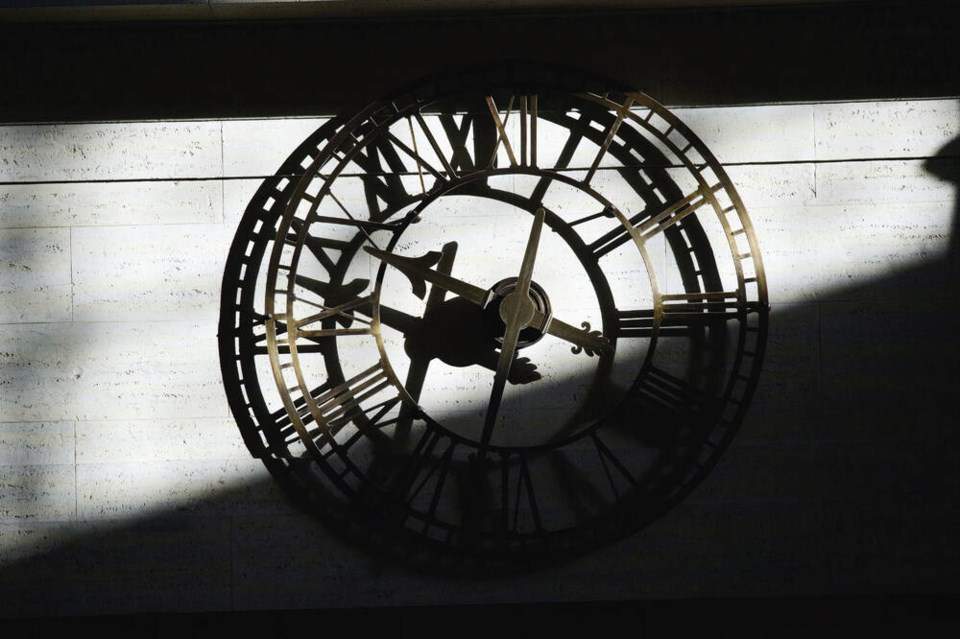Two years after B.C. promised to keep the province on daylight time year round, the government has again hit the snooze button, saying it won’t make the change until the West Coast U.S. states do.
And, like clockwork, opponents of the twice-year changing of the clocks ask: What are we waiting for?
“We’ve been talking about this every year, twice a year, for 30 years,” said Tara Holmes of Kamloops.
She helps run the Facebook page Stop the Time Change and has been lobbying since 2015 against springing ahead in March and falling back in November.
“It’s not going away, it’s not going away,” she said. “Are they not tired of the conversation? The only way to stop the conversation is to stop the time change.”
B.C. in 2019 brought in legislation that would pave the way for a permanent daylight time, to be called “Pacific Time,” B.C. Attorney General David Eby said in an email on Friday.
But he said individuals and businesses who responded to a survey in 2019 said it was important for B.C. to remain on the same time as Washington, Oregon, California and Yukon.
“Our U.S. neighbours haven’t decided to make the switch so far,” he said. “We continue to watch how things play out in the U.S. so we can make this change together.”
B.C. politicians “are just afraid to be the one to do it,” said Holmes. “They should show leadership. If B.C. does it, I’m sure the rest will follow.”
Yukon made the switch last year. But it’s not that simple in the U.S. All three West Coast states have approved a permanent move to daylight time at the state level.
But in the U.S., the federal Uniform Time Act of 1966 allows states to follow only standard time all year round, as Arizona and Hawaii do. Maintaining daylight time year round needs the approval of the U.S. Congress.
Senator Patty Murray of Washington state has co-sponsored a bill — called the Sunshine Protection Act — and is requesting the Biden Administration grant the 19 states who have approved year-round daylight time a federal waiver that would allow them to do it.
“Americans want more sunshine and less depression,” Murray said in a report by King 5 news.
The bill was introduced into the U.S. Congress by a Florida senator in 2018 and again in 2019, and is backed by Republic and Democrat senators. But it has not yet passed.
In B.C., Holmes said Premier John Horgan’s explanation last year that the issue wasn’t top of mind for people because of the pandemic made sense, as it does this year, because “goodness, there are a lot more serious things going on.”
But she worries the momentum of the movement — evidenced by a majority of respondents to the 2019 government survey supporting the change and the government’s own admission that the topic generated the most correspondence of any issue in pre-COVID times — is being lost.
Holmes doesn’t have a preference for daylight or standard time. “We just want this time change to stop.”
She encourages others who agree to email or write to the premier or deputy premier to keep pushing for the change.
Studies have linked the time change to increases in car crashes, depression, lower productivity, and higher risks for heart attacks and strokes.
Clocks change to standard time at 2 a.m. on the first Sunday in November and are put forward to daylight time the second Sunday in March, about 3 1/2 months later. We spend two-thirds of the year — 238 days, 34 weeks or eight and a half months, in daylight time.
During a municipal election across Alberta last month, voters — by a razor thin 50.2 to 48.8 per cent margin — voted to keep the twice-yearly time changes.

.png;w=120;h=80;mode=crop)

